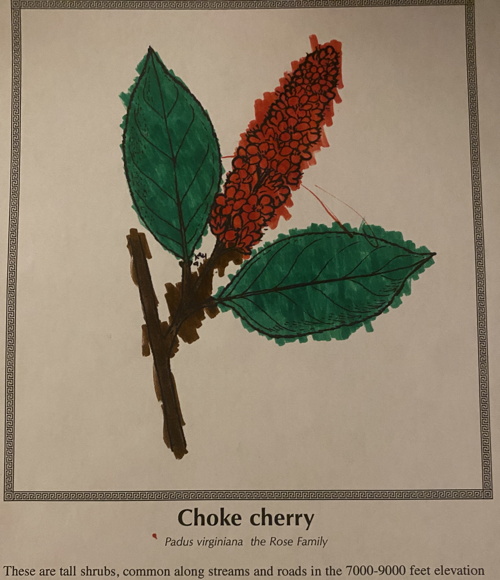I could spend all day just surfing the web looking for hidden gems. You know what I mean, those resources you find in sites where you didn’t expect them. Once Christy (our Growing Math Community Manager) and I started reading these we found SO much good stuff. Expect more newsletters and lesson plans from us over the next week. Here are eight for today.
Middle School Science Resource
Wildflowers of Ponderosa Pine Forests Coloring Book – Before you swipe left because it says ‘coloring book,’ let me explain why I categorized this as a middle school resource. First of all, there are the two pages at the beginning that explain the pine forest ecosystem, including an illustration of Life Zones.
Science meets art and reading
Another point in the wildflower coloring book’s favor is the vocabulary. In addition to the discussion of ecosystems, there are pages of instructions for how to color the flowers to be scientifically accurate. The instructions include such terms as “fuchsia,” “vivid tangerine” and “cerulean.” I had to look up “cerulean,” although I did know it was some kind of blue.
As a middle school teacher, I have often had students who were not particularly interested in math, science or reading but were very motivated by art. Personally, I was the opposite. I was bad at art and it was not my favorite subject. I was the kind of kid who would look up the meaning of cerulean, though.
You may have your own idea for lesson plans using this resource or you can check out the Growing Math site to see mine.
Elementary School Science Resources

California Plants to Color – Yes, another coloring book. This one has vocabulary at a lower grade level. The only words with which students in grades 2-4 will have difficulty are the flower names or locations, like Scarlet Monkeyflower. “Scarlet” probably isn’t in the average second-grader vocabulary. On the other hand, I can see them being highly amused by the name “monkeyflower.”
The Great Garden Detective Adventure – For 3rd and 4th grade classrooms, this free, USDA standards-based curriculum introduces nutrition and healthy eating to kids. Kids can grow things, explore tastes, and learn about nutrition and agriculture.
Celebrating Wildflowers Planting local native wildflowers is healthier for the local fauna. Some gardeners even sow wildflower seeds in the late fall or winter. Educators, check out Pollinator of the Month, State Flowers, and Wildflower Poetry under Teacher Resources.
Teaching vocabulary/ a teachable moment
The California Plants to Color book is based on series of newspaper “Plant of the Week” articles from many years ago, and includes text such as:
“The berries were eaten by the Indians.“
or
“They were used by the Indians for insect repellent, for flavoring and to protect against colds.”
Similarly, the Ponderosa Pine Forests book says,
“… the poisonous nature of this plant enabled American Indians to make medicinal preparations for killing lice.”
How would YOU teach about outdated terms?
There is nothing in these books that is derogatory and I think the inclusion of discussion how indigenous people used plants is a positive. Although, I was somewhat uncomfortable with the terminology, I didn’t want to throw the baby out with the bathwater. So, I turned to my co-director of the Growing Math Project, Juliana Taken Alive, for her advice.
My recommendation for teachers is that this is a teachable moment. Explain to students this book was written a long time ago and back then the government term for the indigenous people of North America was “Indians” but we no longer use this term.
“Indigenous” means native to a place, that is, being originally from there. That’s why we call the people who originally lived in California “Native Americans” or “indigenous.” And, of course, a lot of indigenous people still live in California and other states.
Additional explanation, depending on grade level
Juliana was the second person (Megan Red Shirt Shaw was the first) to point out something that made perfect sense once someone mentioned it to me, which was that correct usage, and I don’t mean politically correct but as in “not wrong” usage is to use the name of a tribe when known and appropriate. As the Native American Journalists Association points out, you don’t say “some Asian country” when you mean China or “Pennsylvania city” instead of Philadelphia. So, if you know that Juliana is Lakota or that sheep raising is an important part of agriculture in the Navajo Nation you should use the name of the tribe.
